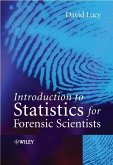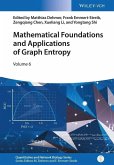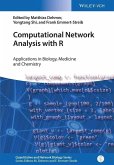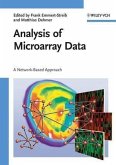Introduction to Statistics for Forensic Scientists is an essential introduction to the subject, gently guiding the reader through the key statistical techniques used to evaluate various types of forensic evidence. Assuming only a modest mathematical background, the book uses real-life examples from the forensic science literature and forensic case-work to illustrate relevant statistical concepts and methods. Opening with a brief overview of the history and use of statistics within forensic science, the text then goes on to introduce statistical techniques commonly used to examine data obtained during laboratory experiments. There is a strong emphasis on the evaluation of scientific observation as evidence and modern Bayesian approaches to interpreting forensic data for the courts. The analysis of key forms of evidence are discussed throughout with a particular focus on DNA, fibres and glass. An invaluable introduction to the statistical interpretation of forensic evidence; this book will be invaluable for all undergraduates taking courses in forensic science. * Introduction to the key statistical techniques used in the evaluation of forensic evidence * Includes end of chapter exercises to enhance student understanding * Numerous examples taken from forensic science to put the subject into context
Dieser Download kann aus rechtlichen Gründen nur mit Rechnungsadresse in D ausgeliefert werden.
"It deserves a place in the library of any serious forensic scientist and I congratulate the author on his achievement." (Significance, 1 March 2006) "...useful for those who are becoming introduced to forensic science." (The American Statistician, August 2007)
"...the book is an easy read...it would appeal to students of forensic science at both introductory and advanced levels." (Journal of Tropical Pedriatrics, 2nd February 2006)
" ... deserves a place in the library of any serious forensic scientist and I congratulate the author on his achievement." (Significance, Issue 3, 2006)
" ... an easy read with many complex concepts described in a lucid style." (Journal of Tropical Pediatrics: Vol. 52; 4, 2006)
"One of the most important issues in using likelihood ratios in a forensic context may well be determining the relevant population of a sample. This is an are that is discussed throughout the text...gives insight..." (Canadian Society of ForensicScience, October 2006)
"...the book is an easy read...it would appeal to students of forensic science at both introductory and advanced levels." (Journal of Tropical Pedriatrics, 2nd February 2006)
" ... deserves a place in the library of any serious forensic scientist and I congratulate the author on his achievement." (Significance, Issue 3, 2006)
" ... an easy read with many complex concepts described in a lucid style." (Journal of Tropical Pediatrics: Vol. 52; 4, 2006)
"One of the most important issues in using likelihood ratios in a forensic context may well be determining the relevant population of a sample. This is an are that is discussed throughout the text...gives insight..." (Canadian Society of ForensicScience, October 2006)
"...the book is an easy read...it would appeal to students of forensic science at both introductory and advanced levels." (Journal of Tropical Pedriatrics, 2nd February 2006)









